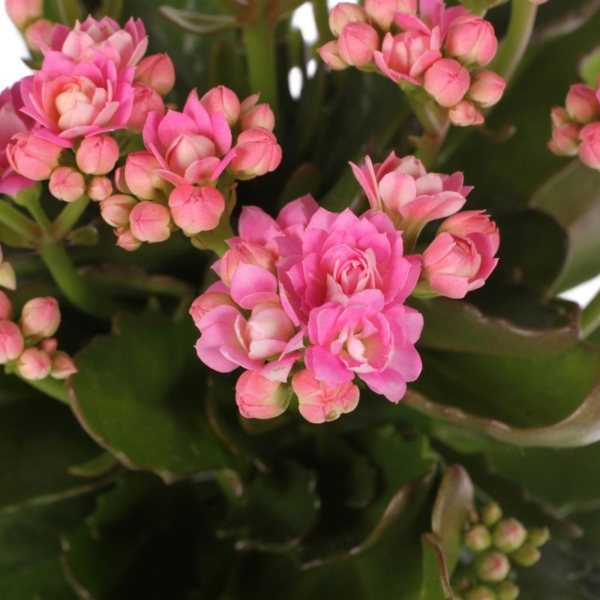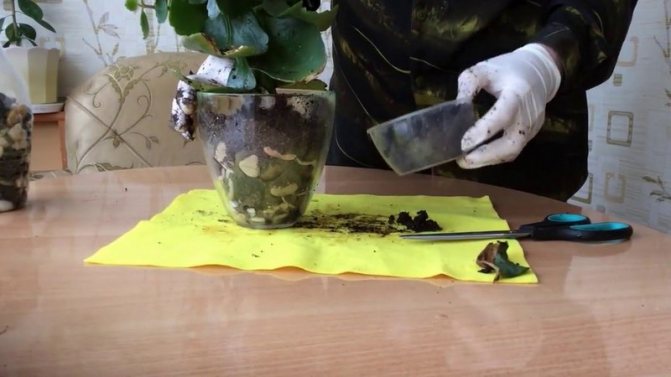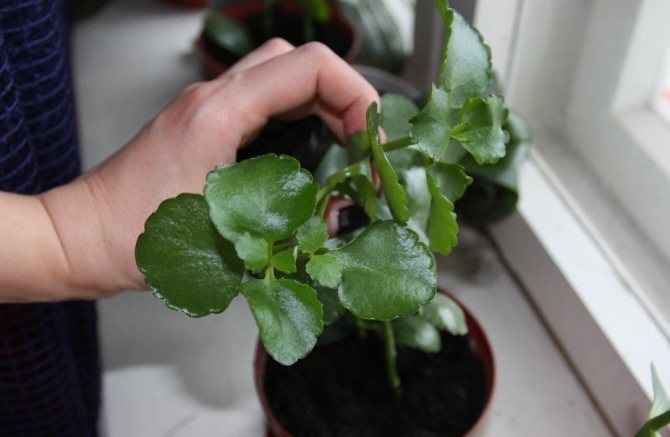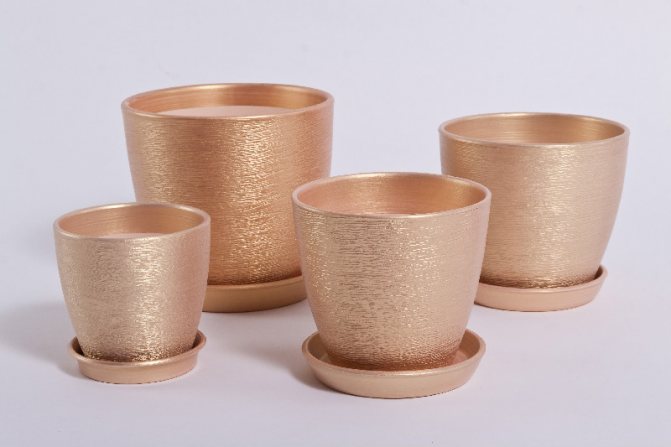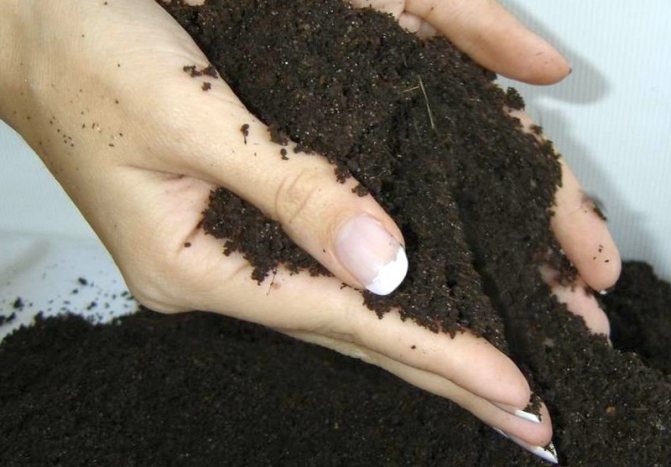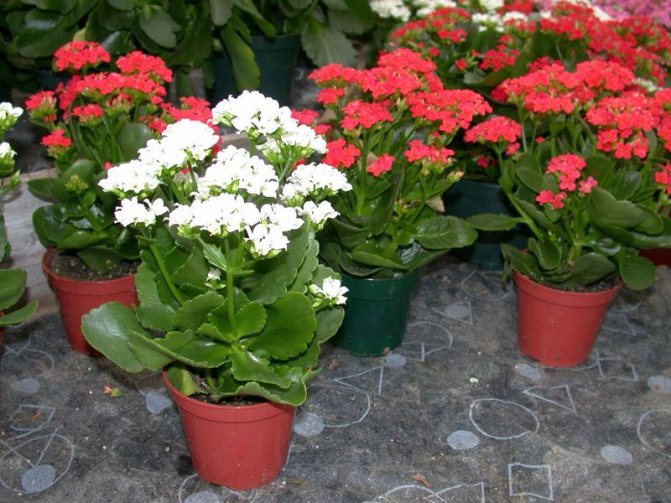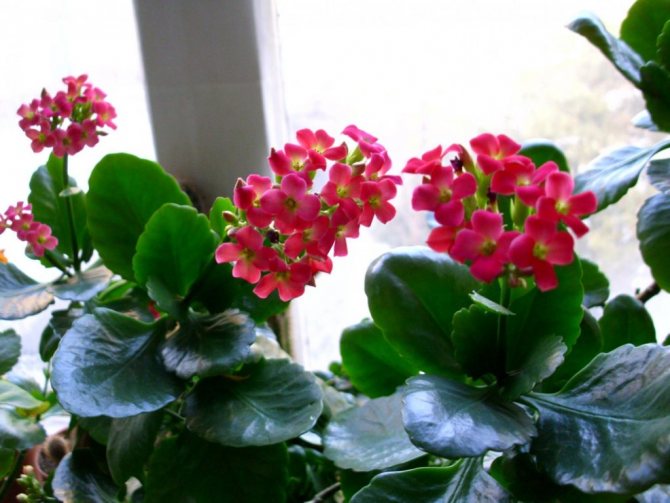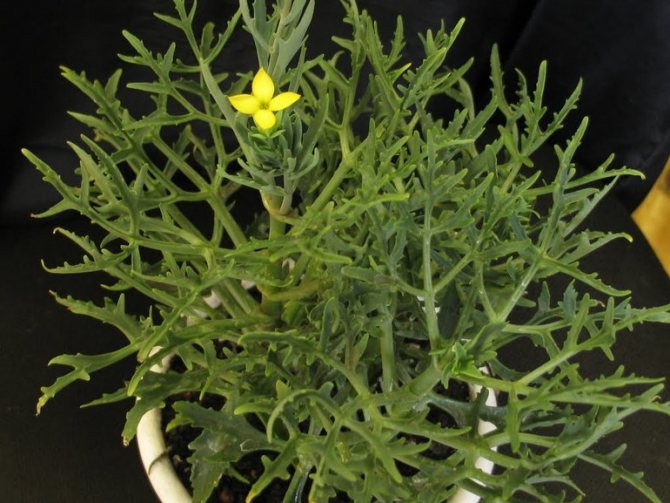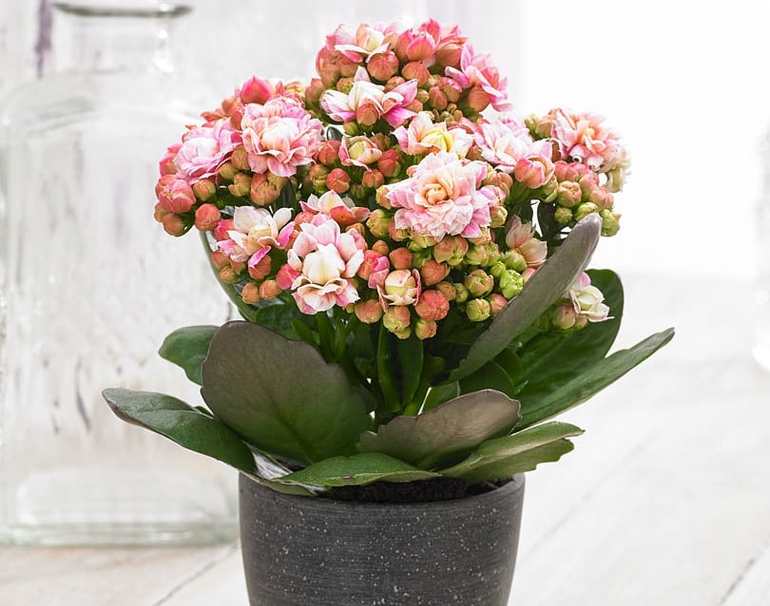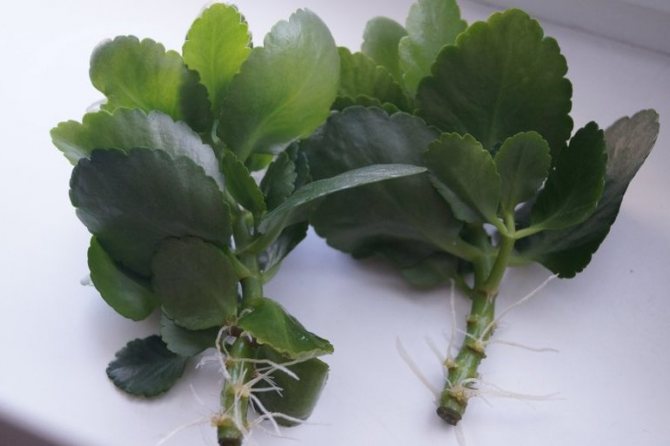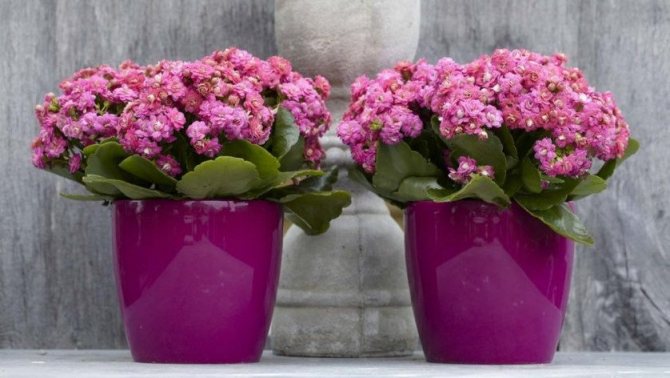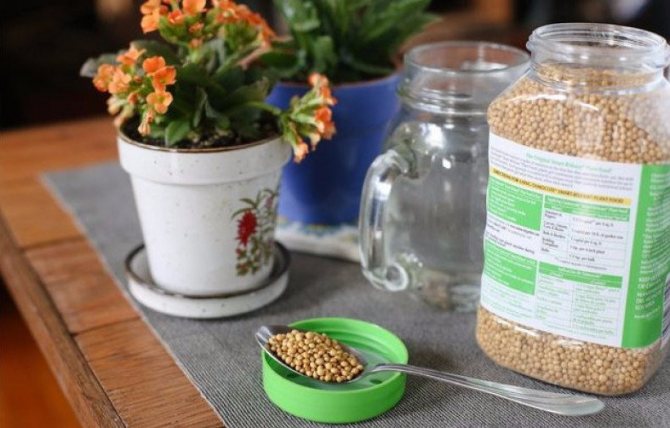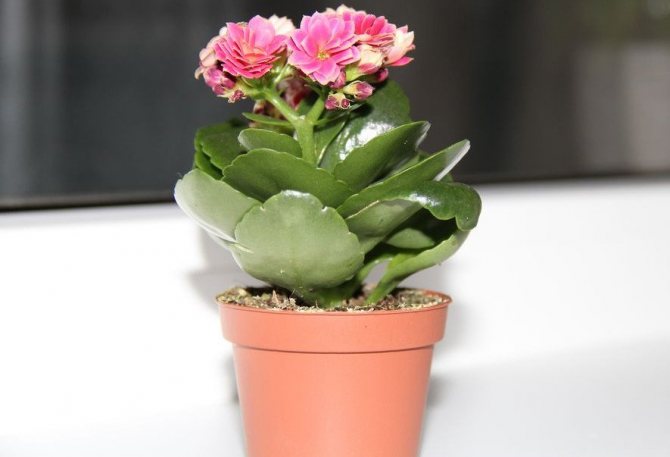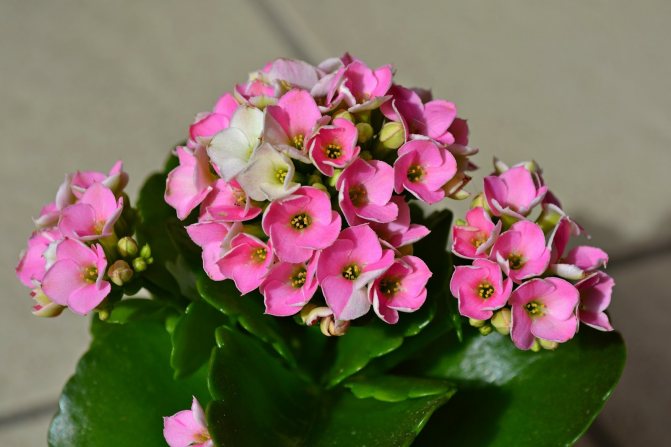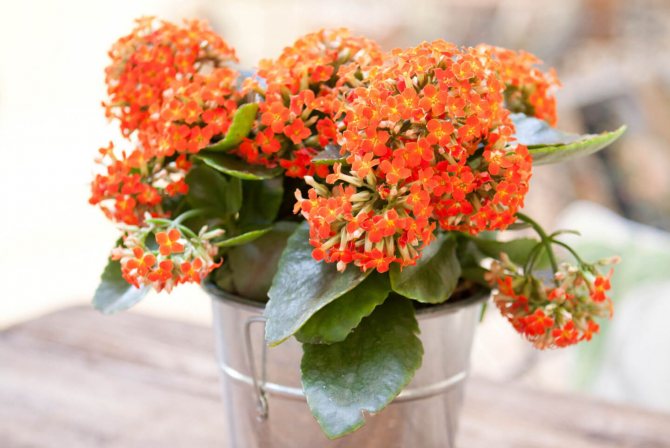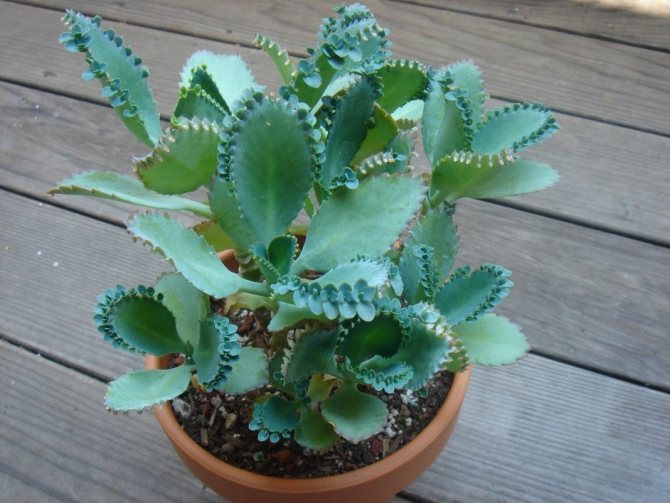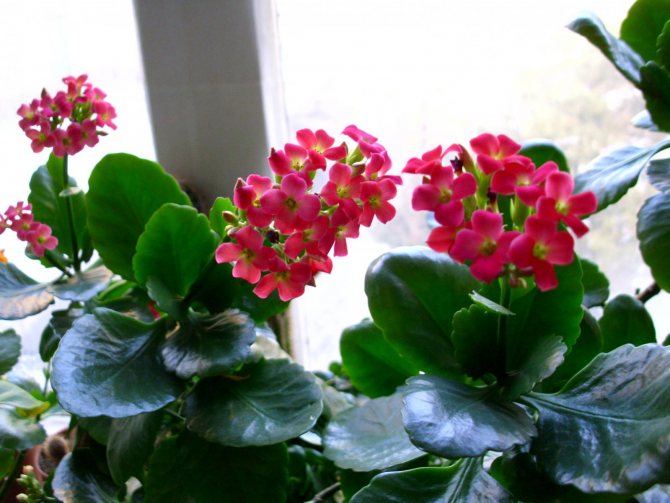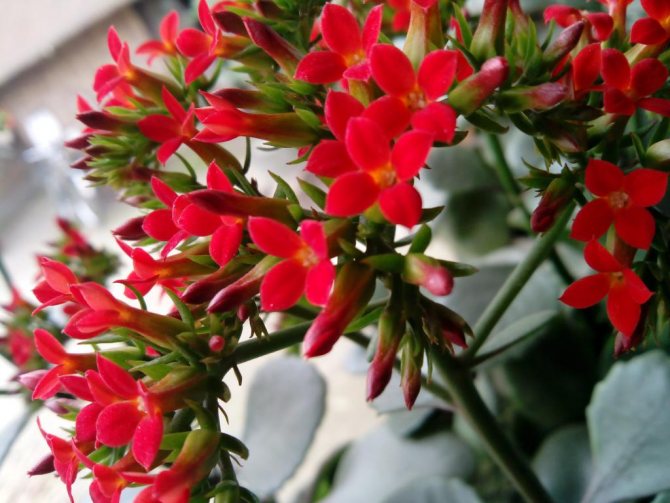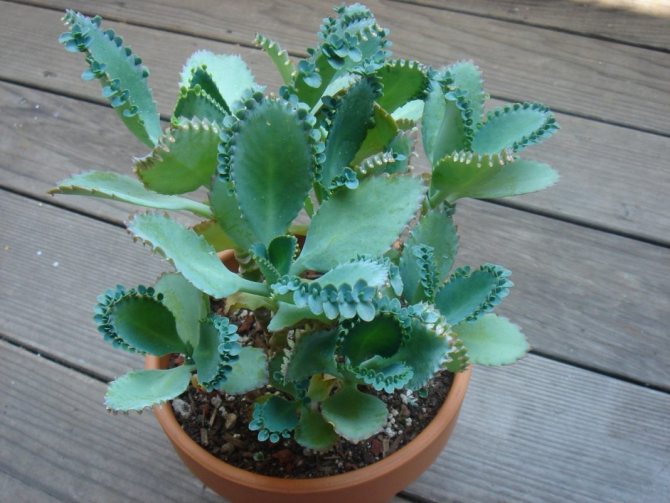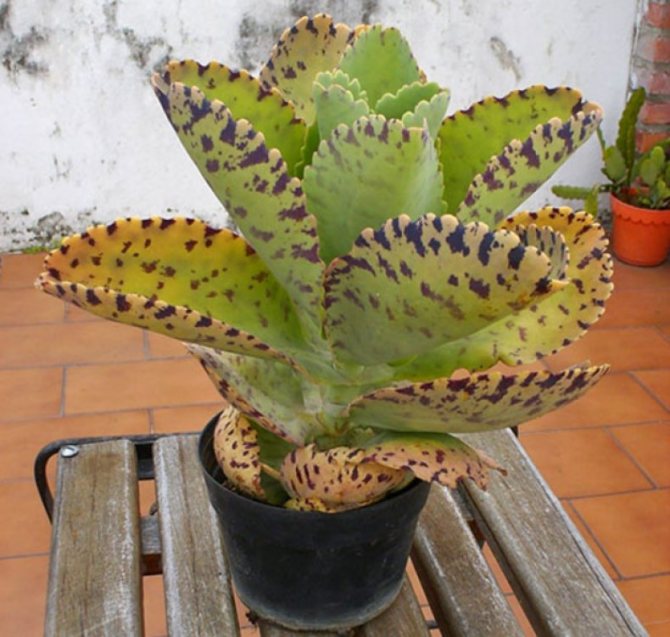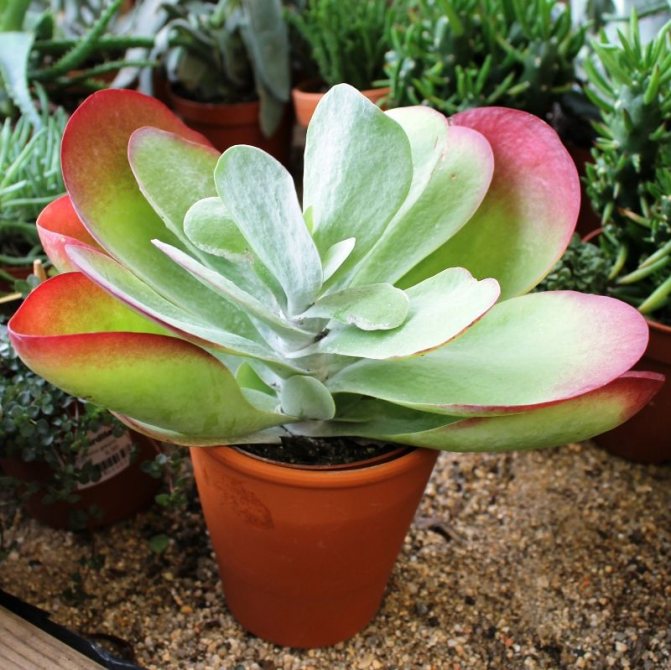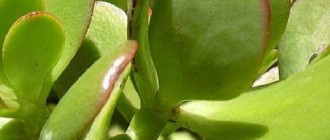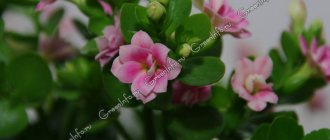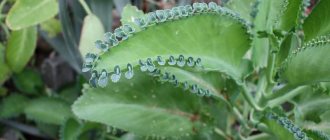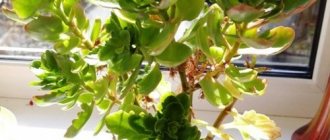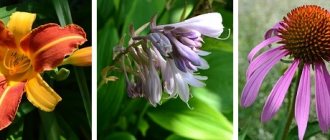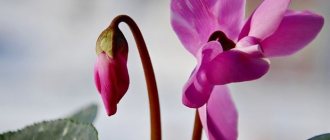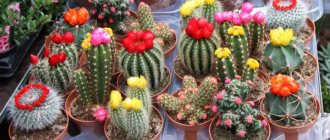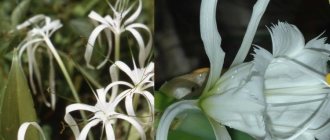
How is Kalanchoe planted? This question is of concern to many housewives who want to breed such a flower at home. We will look at the basic rules for planting a plant and learn how to further care for it.
- Pet care
- Disembarkation methods
- Planting cuttings
- Planting a single sheet
- Seed propagation
- Adult plant care
How to choose the right one
When choosing a plant in a flower shop, you should pay attention to the appearance, check that there are no pests or diseases. The best time to buy is the beginning of winter, it is during this period that its flowering begins.
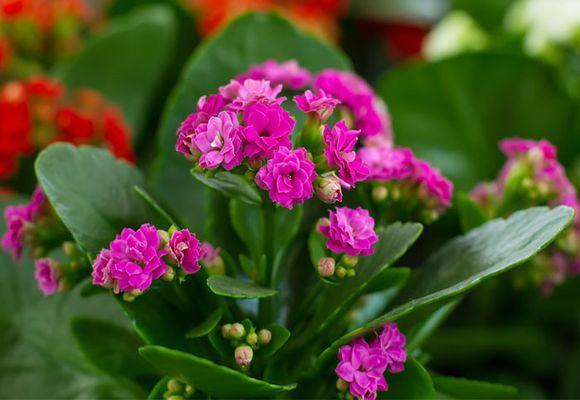

Leaves
They can immediately show what conditions the plant had. The flower should have firm, fleshy leaves of a rich dark green color with good tone. They should not have any spots or damage - this is the first sign of plant unhealthy. According to the state of the entire bush, we can say that there was not enough light for it if the stem stretches upward, and the crown is very sparse. In a plant kept in favorable conditions, the greens are lush and dense with a bright color, the bush itself is low and compact.
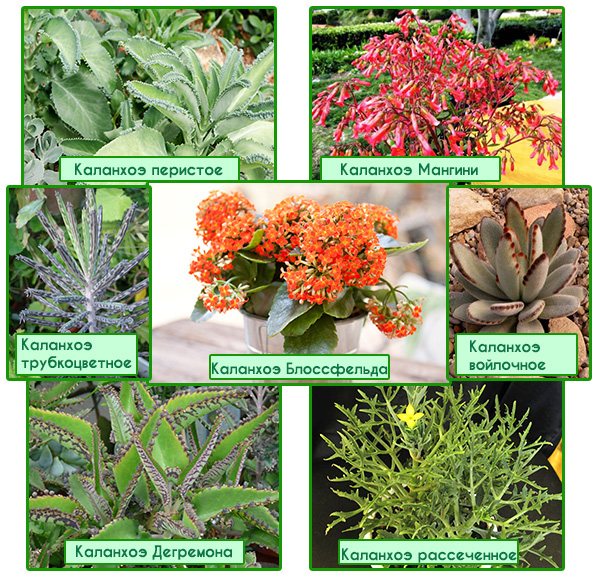

Buds
It is best to buy a plant during the period of bud formation. Already at this stage, by half-open ovaries, one can determine what color the Kalanchoe inflorescences will be. After a short time, the entire bush will be completely covered with small bright flowers.
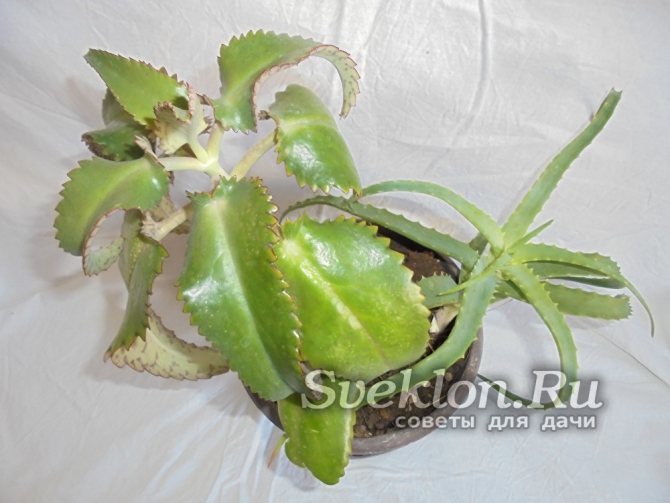

Breeding methods of Kalanchoe
At home, reproduction of Kalanchoe is possible in different ways. In particular, you can use babies, cuttings (shoots), seeds and even leaves. It is important to understand that not all of the proposed methods are universal, that is, not every one can be used to reproduce a particular Kalanchoe variety.
Cuttings
Reproduction by cuttings is considered one of the most demanded. It is in this way that it is recommended to propagate the popular Blossfeld variety (by the way, it is advisable to update it after each flowering by pruning so that the plant does not lose its attractiveness due to the appearance of bald spots), as well as Mangina (it has thin branching stems). Pruning and subsequent propagation by cuttings (optional) is a necessity for the flower to grow as a dense bush and look beautiful.
You need to take a responsible approach to the issue of choosing a cutting. The process directly depends on how an adult plant will look. Choose a young shoot with juicy and beautiful leaves. It should be at least eight centimeters long.
How to plant a cutting? This is not difficult, but you need to do this so that the lower leaves are directly above the ground. If you have a "bald" part, you can simply cut it off. Next, take care of the young shoot so that it takes root. Once this happens, it needs to be pinned. This will form a beautiful and lush bush.
Kids
This method is suitable for varieties of Kalanchoe, which are called viviparous, for example, "pinnate" or "degremon". The formation of brood buds can be observed in these plants.
They are small plants with tiny leaves and roots.After they are fully formed, they fall off the material specimen and take root in the soil, or they can be immediately planted separately.
Seeds
Certain types of Kalanchoe (for example, "felt" or "feathery") are exotic. They are not often found on the market, so they are usually propagated by means of seeds. The ideal time for disembarkation is March or February.
The planting process is as follows:
- Preparation of soil from sand and peat in a ratio of 1: 2, respectively.
- It should be poured into a tray, and seeds should be placed on top.
- Next, the container is covered with glass and set so that light falls on the seeds.
- It is imperative to achieve a constant temperature of +20 degrees.
- Moisten regularly (immediately after the soil dries) and ventilate the makeshift greenhouse.
- Wait for the seeds to germinate and let them turn into seedlings.
After the seedlings grow up, they can be transplanted into a special soil (more on this below). Next, you need to wait for them to take root, providing proper care.
Post-purchase quarantine and care
If the plant has diseases or pests invisible to the eye, they can infect other indoor plants growing nearby in pots. To prevent this from happening, immediately after the purchase, the flower is placed separately from all the others in a two-week quarantine.
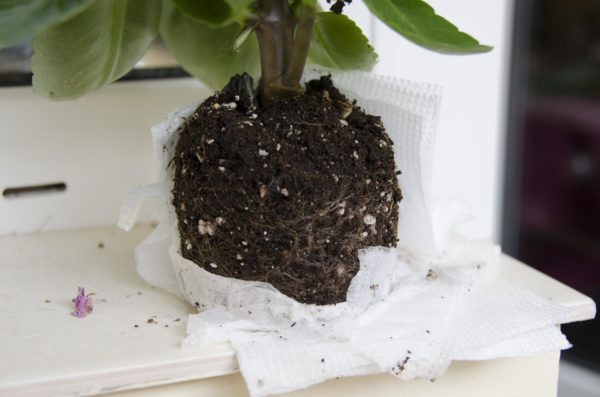

During this time, all latent symptoms should appear. After that, you can choose a suitable place for him and provide appropriate care for the Kalanchoe at home.
Preparatory work
Before transplanting a plant, it is necessary to carry out a number of preparatory work. Prepare substrate, some sand, drainage and water. Choose the size of the pot into which the flower will be transplanted. If the pot was in use, be sure to wash it with laundry soap and disinfect it with manganese solution or 2% copper sulfate solution for a couple of hours. Wash a new container with soap and hold it in boiling water for two hours. Use only when the container is completely dry so that the root structure of the plant does not start to rot.
Temperature and lighting
For lush flowering and good growth of a flower, it needs to create the appropriate conditions. Kalanchoe loves sunny places; on the south side it will be comfortable during the flowering period. He also feels good in the northern or western zone. A reduction in daylight hours should be created if you want to artificially bring the flowering time closer.
The temperature regime for keeping Kalanchoe in winter and summer is not the same. In summer, the plant easily tolerates heat from 16 to 30 ° C, in winter it will be comfortable at 10-16 ° C. Cold temperatures below 10 ° C can kill the plant.
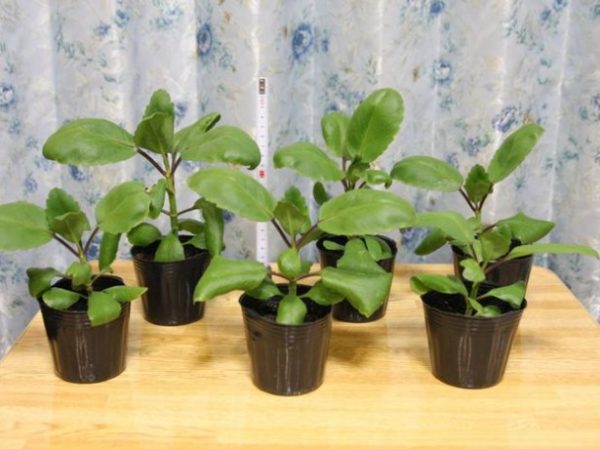

Description and types
Kalanchoe belongs to the genus of succulent grasses, the fatty family. The flower has fleshy stems and leaves that can accumulate and retain moisture for a long time. Evaporation is minimal thanks to a film that covers the entire surface of the flower.
More than 200 species of Kalanchoe are known, growing in the tropics of Africa, Asia, America. All types are divided into two groups:
- Medicinal representatives used in folk medicine as an anti-inflammatory, wound-healing, bactericidal agent.
- Decorative patterns that delight households with their bright colors of lush bloom.
Which green pet you want at home - useful or beautiful - is up to you. Landing of all types is the same.
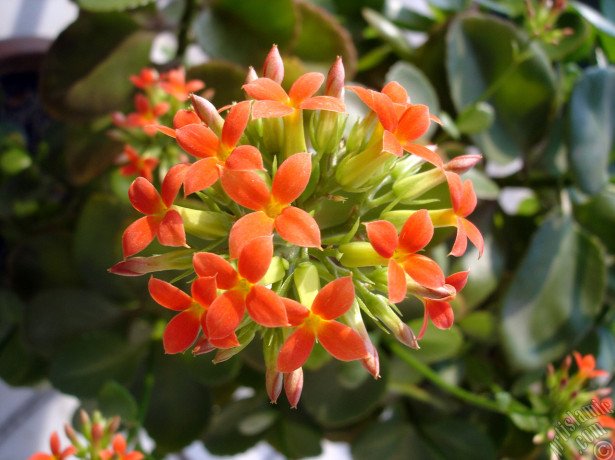

The flower has fleshy stems and leaves that can accumulate and retain moisture for a long time.
Pruning and pinching
Pruning is necessary to form a bush after flowering. During this period, the flower loses its decorative effect - the buds have faded and crumbled, the leaves begin to fall off, the stem is bare and stretches upward. In order for the plant to again have a magnificent appearance and abundant flowering, the aerial part is cut off to a low shoot.This is the beginning of the formation of new shoots.
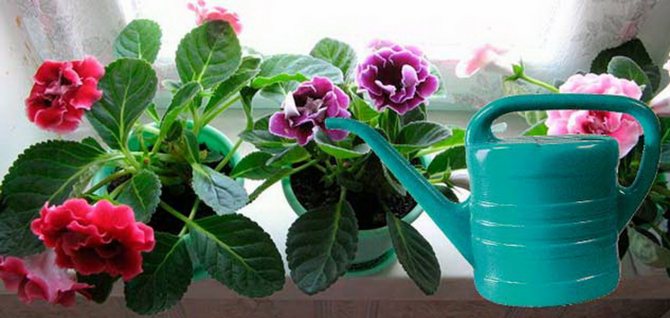

Photo
Correct pot for Kalanchoe Photo:
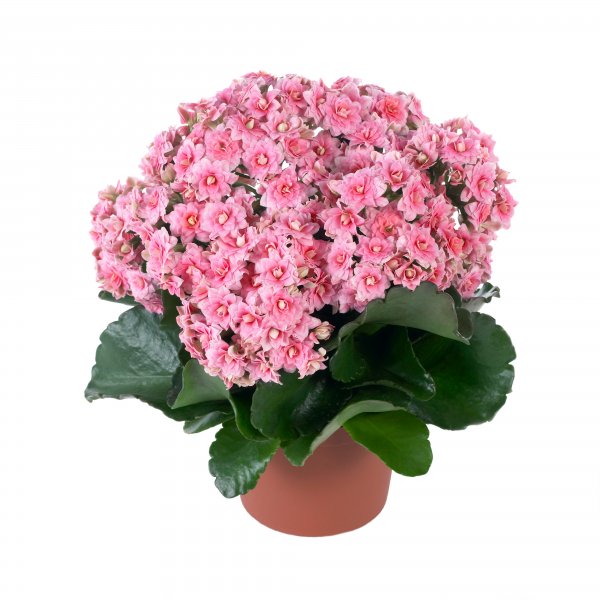

Top dressing and fertilization
The Kalanchoe is fed regularly, once a month. All fertilizers intended for succulents are suitable for this. When introducing nutrients, the rule should be observed: it is better to underfeed than overfeed. If the plant is overfed, it will build up abundant green mass to the detriment of flowering, that is, the bush will have lush foliage, but no flowers. Before the fertilization procedure, water is first done with clean water to avoid scalding the roots.
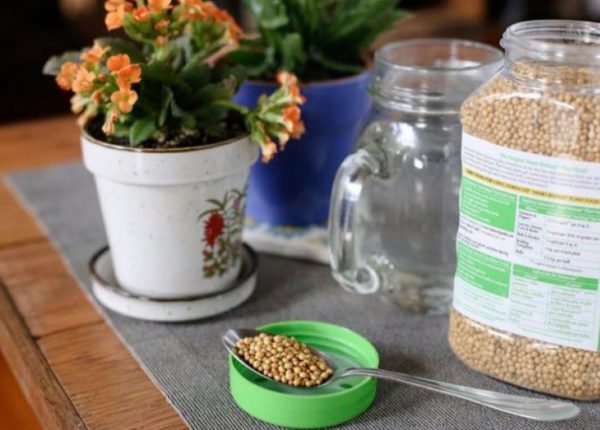

Preparing for landing
For Kalanchoe, it is better to select plastic containers that have not previously been used. There must be a sufficient number of drainage holes at the bottom of the container. The size of the pot depends entirely on the size of the plant. For example, it is better to transplant a young shoot into a container 2 cm larger in diameter.
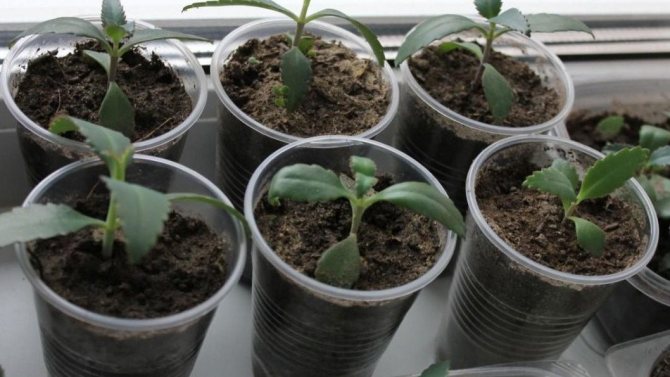

If we are talking about adult specimens, then the size of the new pot should be such that the old one fits into it rather tightly. The fact is that the plant will bloom only in a rather tight container. A large capacity will serve as an impetus for the development of the root system and deciduous part to the detriment of flowering. The pot must be disinfected before use.
For this purpose, you can use:
- concentrated manganese solution;
- laundry soap;
- furacilin solution (1 tablet per 50 ml of boiling water);
- boric acid.
Important! Do not plant plants in wet containers. After disinfecting treatments, rinsing and other manipulations with liquids, be sure to dry the container in the sun.
Soil for Kalanchoe is prepared by mixing in a ratio of 4: 2: 1:
- peat;
- soddy leafy soil;
- sand.
Soil disinfection is best done with a hot wood ash solution. He will not only disinfect it, but also nourish it with useful minerals. Prepare it at the rate of 1 tbsp. l. ash per 1 liter of water. The mixture must be boiled, poured hot into the soil and mixed thoroughly. Then the soil is dried so that by the time of planting it is sufficiently moist, but does not stick to your hands.
For Kalanchoe, drainage should also be prepared. It is best to mix expanded clay with perlite in a ratio of 1: 0.5 and add 20% of the total mass of sphagnum moss. Before use, the mixture is poured with boiling water, then dried and crushed.
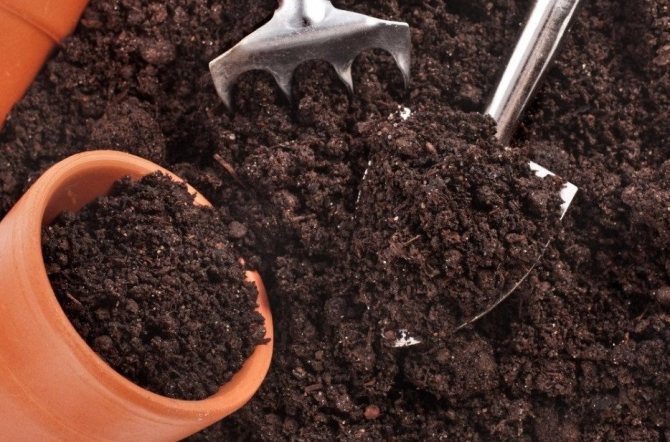

Watering
You may be interested in: Chlorophytum: growing, care and reproduction at home Saintpaulia: varieties, cultivation and care at home Sheflera's flower: care and reproduction at home
Kalanchoe is not very demanding for watering, it does not need to be irrigated too often or abundantly. Fleshy leaves and stems accumulate moisture and consume it when necessary. Frequent watering can lead to rotting of the root system.
Watering is carried out in winter once a week, and in summer it is increased to twice every 7 days. During adaptation, it is not recommended to carry out top dressing and watering should be moderate to maintain light moisture in the earthen coma.
After purchase, when transplanting into a pot, a drainage layer is laid on the bottom. This protects the root system from stagnant water. Watering at home is done by pouring water into the pan, go to the root. Leaves should be protected from water getting on them.
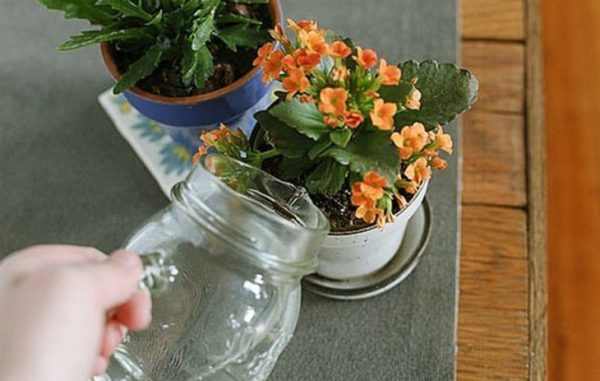

Planting cuttings
Planting by cuttings will make it very easy and quick to get new plants. To do this, a small stalk is cut off from the parent flower and placed in water to form roots. There you can also add two tablets of activated carbon to avoid decay. The shoot is planted in fertile soil when the roots reach 1-1.5 cm in size.
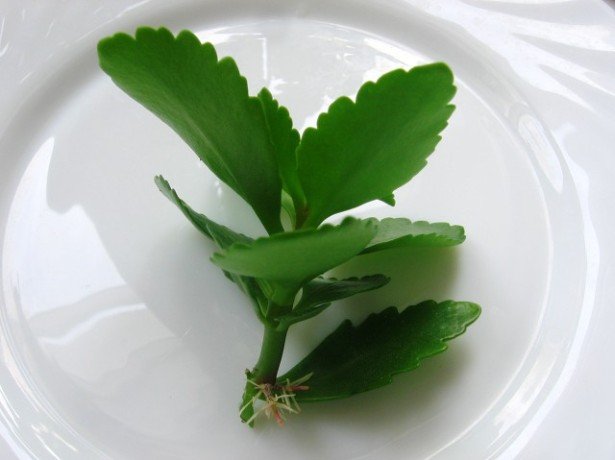

Planting by cuttings will make it very easy and quick to get new plants.
It is necessary to water a small Kalanchoe more often than an adult plant, since its roots are not so developed.Spraying will also benefit him, but he will not like direct sunlight.
He almost does not need fertilizers, it is better to add root formation stimulants to the water for irrigation 1 time in 10 days.
Buds may appear on the cuttings from a flowering sample (even at the stage of root growth). They should be cut off so that they do not take strength from the roots. Then drop them off as described above. After 10 months, a new resident of the window can bloom.
Breeding video
Transfer
Kalanchoe grows and develops very actively, therefore, regular transplantation is necessary for the normal development of its root system. Young plant bushes should be transplanted every year, old ones do not need such frequent transplantation, it is enough to update the pot after 3 or even 4 years. A newly purchased plant must also be transplanted, observing certain rules for caring for the Kalanchoe.


Common diseases
Most often, diseases attack the Kalanchoe due to errors in care or conditions unfavorable for development. The most common Kalanchoe diseases are gray rot and powdery mildew.
- Powdery mildew
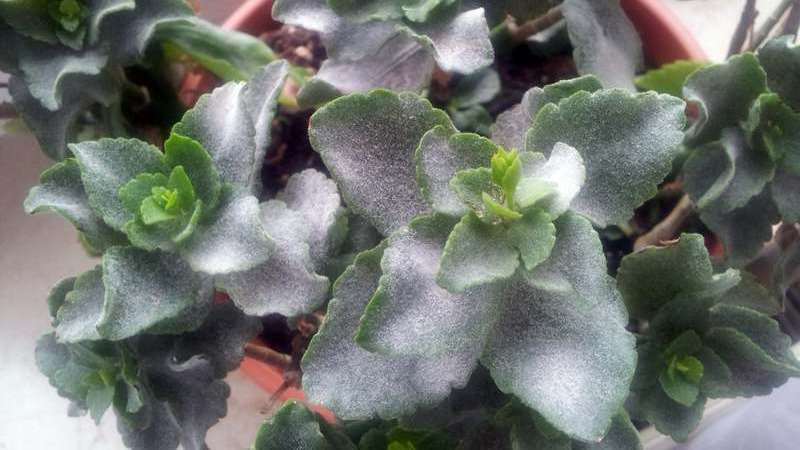

White bloom on the plant, begins to develop from excess moisture. If the plant is frequently watered and sprayed, this will happen 99% of the time. Powdery mildew is treated with special preparations. You should not fight it with laundry soap, ash and other folk methods. The disease progresses very quickly, and if it is not transplanted into dry soil, reducing the humidity in the room, and not treated with drugs, it will die. - Gray rot
Soil composition
There are two options for soil: buy at a flower shop or make your own. When buying ready-made soil, you should choose a mixture for succulents. If the composition is prepared at home with your own hands, then the proportions should be observed:
- 4 pieces of turf;
- 2 pieces of leafy land;
- 1 part peat;
- 1 part sand.
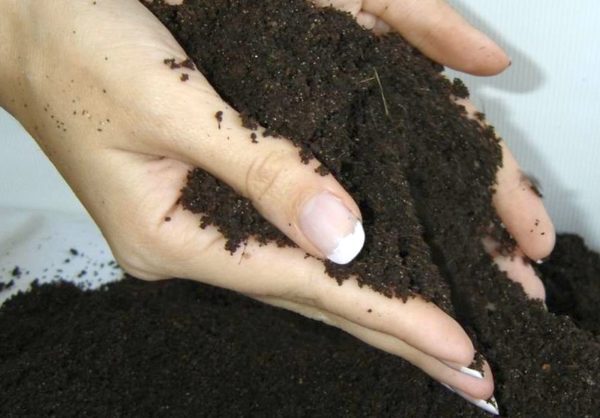

Birch charcoal is added to loosen the soil.
What should you focus on?
But before moving on to the basic rules for choosing a pot for a plant, it will not be superfluous to get acquainted with the features of the Kalanchoe life cycle. This flower tolerates temperature changes and loves sunlight. It constantly needs irrigation, but this plant should be watered very carefully, since it often dies from acidification of the soil. It is this factor that should be the main one when choosing the size of the container.
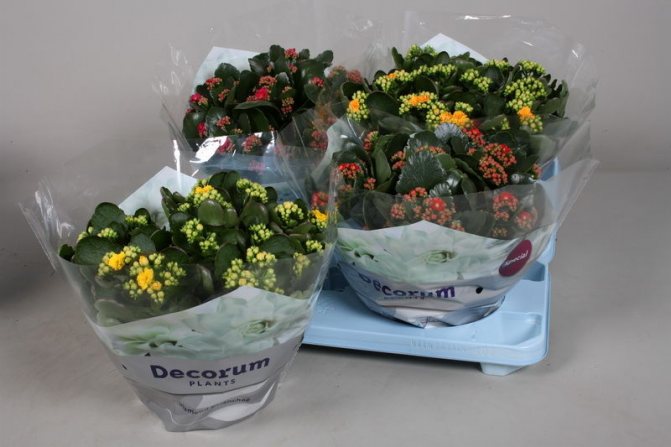

Purchased small Kalanchoe needs to be transplanted into permanent pots in two weeks.
It is very important that the root system of the plant receives oxygen and develops normally. Permanent loosening of the soil partially ensures this. But at the same time, it is also necessary to choose the right material for the pot.
Small Kalanchoe seedlings are quite vulnerable to all kinds of pests and diseases. And all flower growers know that often plants begin to hurt after transplanting due to insufficiently well disinfected or ecologically improperly selected pots. This should also be taken into account.
How to transplant correctly
When transplanting, you should act carefully and carefully so as not to damage the juicy and fragile shoots:
- First, the drainage layer is poured into the prepared pot, then the finished soil mixture is poured into half the pot.
- The earth is collected in the center with a slight elevation.
- The bush is taken out of the old pot along with a lump, trying not to damage the roots, set on a dais and pour the earth on top, crushing it a little. After transplanting, the soil should be several centimeters below the edges of the pot.
- Immediately after transplanting, water the flower abundantly and take it to a darkened place for several days.
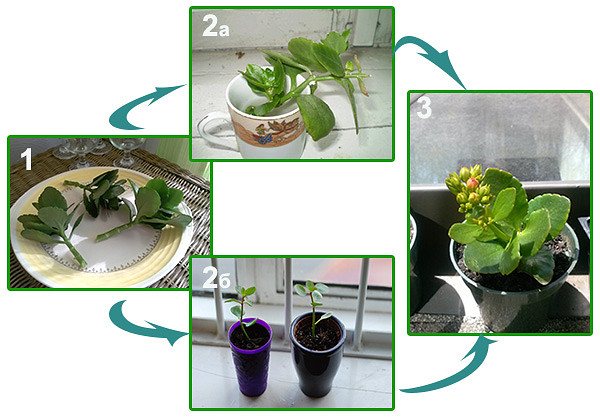

Features of transplanting a purchased plant
Immediately after purchase, if the flower does not bloom, the Kalanchoe is transplanted into another pot in the same way, only by removing it from the old flowerpot.The entire earthen lump is removed, the roots are completely cleared of soil. The cleaned bush is placed on a raised platform in the center of the pot, straightened and sprinkled with earth on top. Caring for the Kalanchoe is not particularly difficult, the main thing is to transplant it correctly at home.
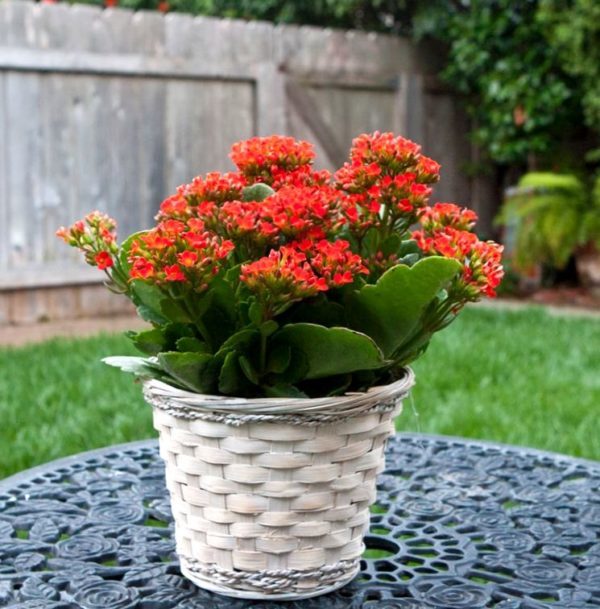

Typical mistakes of florists when planting
The main mistakes of florists during planting work are as follows:
- disregard for the rules of disinfection of soil and pots;
- the use of substrates for universal purposes - you can use them, but at the same time add nutritious loosening substances (peat, sand, deciduous humus or compost) to the composition;
- carrying out transplant manipulations immediately after purchase, without allowing the plant to adapt to new conditions;
- strong waterlogging of the soil intended for planting.
We advise you to read how to properly cut Kalanchoe at home.
Transplanting Kalanchoe is not very difficult. The main task is not to overmoisten the flower after manipulation and to create optimal microclimate conditions for it.
Features of keeping Kalanchoe at home
In most cases, Kalanchoe is flowering plants. But some species do not have flowers or bloom very rarely, for example, Kalanchoe Felt, Kalanchoe Laciniata. Flowering and non-flowering Kalanchoe species require the same growing conditions.
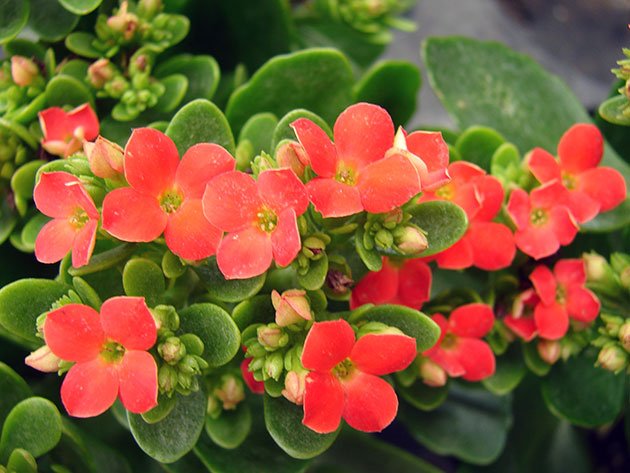

Kalanchoe can bloom from early winter to late spring
Watering the plant
Watering is carried out once every three days. Allow the soil to dry between waterings.
How to determine if the earth is dry or not? Place your finger on one phalanx in the ground, if the ground is dry - it's time to water the Kalanchoe.
More often (every other day) it is watered only in hot weather, and in winter it is watered less often - once every 10-14 days. When watering the Kalanchoe, adhere to the rule: it is better to underfill than overflow. The plant is afraid of high humidity. Spraying is also not recommended.
Temperature and lighting
Favorable temperatures in summer should be 23–25 ° C, and in winter 12–16 ° C. Kalanchoe can withstand a temporary cold snap up to 10-15 degrees, but at temperatures below 5 ° C it will die. A home doctor can easily endure the heat - during this period, water him more often (every other day). Place the planter with the plant on the east or southeast window.
Pruning Kalanchoe
Special attention is paid to the formation of the Kalanchoe bush. In order for the Kalanchoe to have a well-groomed appearance, in the spring, the elongated stems of the plant are cut in half. In the first half of summer, the shoots are pinched. After flowering, remove all wilted peduncles.
Top dressing Kalanchoe
The substrate in which the Kalanchoe grows is fed once a month. Fertilizers for cacti and succulents are suitable for a tropical inhabitant, for example, Agricola or Florovit fertilizer, which are sold in bottles in gardening stores and have a liquid consistency. Such fertilizers are diluted with water in a certain proportion, which is indicated in the instructions. However, an excess of fertilizer will destroy the Kalanchoe. In winter, feeding is stopped.
Potted flowers as part of the interior design
In modern offices, apartments and houses, there are often a lot of flowers in pots. Skillfully selected, they not only look great in different modern styles, but also greatly complement the decor of the premises. Some amateur flower growers allocate a separate space for flowers - like a mini-gallery - on balconies, verandas, part of the room, decorate arches with flowers.
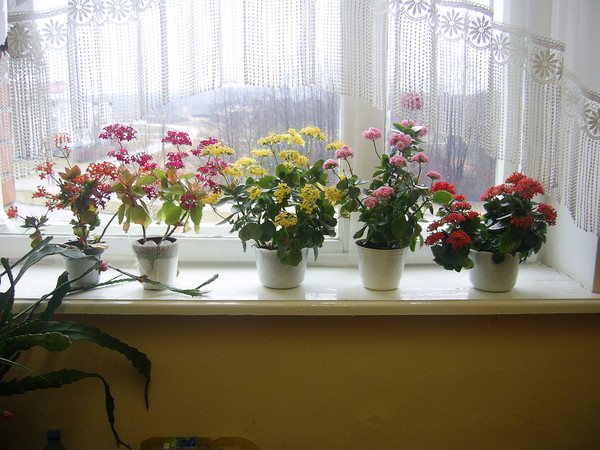

Of course, such compositions look great, if the area does not allow, then they vertically green the space as much as possible - placing racks, stands and brackets on which many pots of flowers are concentrated and, of course, window sills are used. Having experience with the formation of the crown of plants, you can achieve various phytodesign findings and solutions that will make your home unique.Thus, we can say that flowers harmonize living and working space, improve energy in the home and office.
Pest and disease control
The small white discharge found on the leaves is most likely due to a mealybug infection of the plant. It feeds on Kalanchoe sap and quickly attacks the flower. All stains should be carefully removed, and then the leaves should be sprayed with mineral oil. The most affected shoots and leaf areas are best removed.
In summer, ticks and aphids fly into the room through an open window and take root on the leaves of the Kalanchoe. Mites thrive in warm and dry conditions on the back of the leaf, while aphids thrive in generously fertilized soil.
When water stagnates in the ground or excess groundbait, brown bloom and spots may appear on the leaves. They demonstrate improper care that should be changed immediately. The plant needs to be transplanted into looser soil with good drainage. The spoiled leaves must be removed, as well as parts of the roots rotted from excess moisture. Having corrected the mistakes made, no additional measures are required. The plant will quickly bounce back.
An unpleasant problem for all indoor plants is created by powdery mildew when Kalanchoe leaves are affected. It arises from too warm and dry air and can spread to other flowers standing next to the patient. Spraying the plant with fungicides and rearranging it to a cooler place, it is easy to defeat the disease.
If the Kalanchoe is frozen, brown spots will appear on its stem and the plant will dry out. It is very important to observe the correct temperature regime and not to overcool or overdry it.
What a beginner florist needs to know
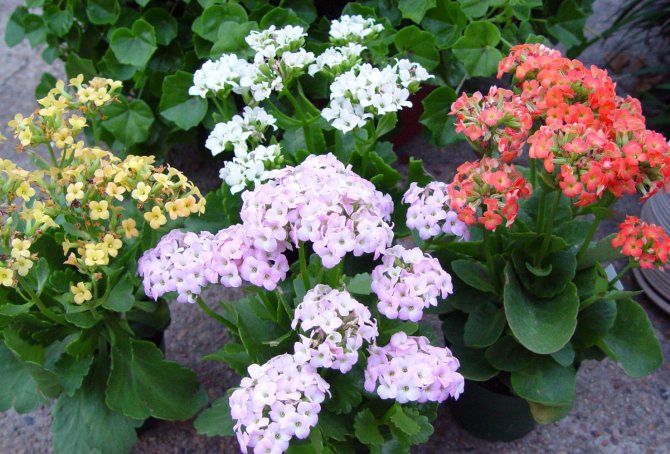

First of all, it is worth deciding on the choice of your plant, since the types of Kalanchoe suitable for home cultivation are divided into decorative deciduous and decorative blooming.
If you want to get your “home doctor”, it is better to stop at Kalanchoe Degremona or Kalanchoe pinnate, the juice of the leaves of which has healing properties and helps with many diseases. Kalanchoe felt with its rounded leaves covered with soft fluff will be the best addition to your mini garden with succulents and cacti. But for those who want to put a flowering plant on their southern window, it is better to dwell on the popular today Kalanchoe Kalandiva and Kalanchoe Blossfeld and its varieties - Kalanchoe Rosalina - mini succulent. The flowers of these two types are so diverse that only with their help you can create a mix of a variety of colors on your window. Kalanchoe blooms from January to mid-summer.
How Kalanchoe is transplanted, if it blooms after flowering
The first thing to attend to is the choice of a pot and soil for the plant. Experts recommend using ceramic pots. Ideally, there are drainage holes in the bottom of the pot. Additionally, in front of the soil, drainage is poured into it, for example, expanded clay, broken brick or pebbles.
Since the Kalanchoe grows, for transplanting, choose a pot slightly larger than the previous one.
As for the composition of the soil, everything is quite simple here. If you don't want to mess with it, you can take a ready-made mixture for succulents, which Kalanchoe belongs to. As for self-production, it is recommended to mix 1 part of river sand, 4 parts of peat and 2 parts of sod land.
Usually Kalanchoe is transplanted after flowering has already passed. This is due to the fact that this process, as a rule, requires the expenditure of almost all resources, and the Kalanchoe may simply not take root in the new soil. Of course, sometimes during flowering, plants purchased in the store are still transplanted, but this is done as carefully and sparingly as possible - using the transshipment method.
This process itself is quite simple - the soil is moistened with water and the pot is prepared for transplanting.The walls of the container in which the Kalanchoe is located are lightly tapped and then the palm is placed at the base of the plant.
The container is turned over and the soil, together with the Kalanchoe, remains in the hand. It is moved to a new pot, at the bottom of which drainage has already been poured, and new earth is poured over. Since the soil is already moistened, the Kalanchoe is given time to adapt (usually a couple of days), and then watered as usual.
After the end of flowering, it is recommended to use the standard transplant procedure, which implies a complete replacement of the soil.
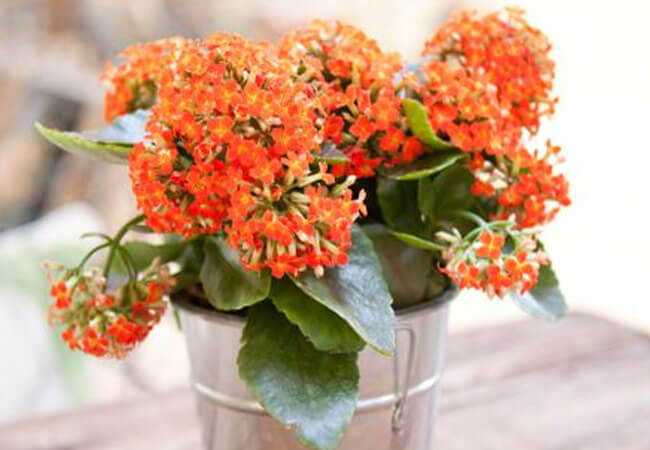

How Kalanchoe is transplanted if it blooms
What is this plant and where is it from?
Kalanchoe Don Sergio is a small plant, belongs to the Tolstyankov family, a genus of succulents, from Africa, South America and Asia. His "father" is Kalanchoe Kalandiva, located in Africa and southeast Asia. Kalanchoe Don Sergio has no medicinal properties. It has a plump, naked and fleshy stem.
The leaves have a roundish shape, a bit like an egg. The plant has small cuttings and they are oppositely arranged. The leaves are darkish green and have denticles. The length of the leaves is average, 50 mm, and the width is 30 cm.
The flowering of this culture is enchanting and takes place within six months. The flowers have a "straight posture", slightly fluffy. The average diameter is not more than 1 cm. The flower has a kind of "crown" of the upper flowers, which are collected in racemose inflorescences. Considering some types of flower, the corolla can be of the following shades:
- yellow;
- red;
- Orange;
- white.
There are about 200 varieties. The flower can store water, so it does not require much effort to care for.
Interesting fact. Previously, this flower was called the Flower of Fate, or from the translation "Kalanchoe" - "plant of life."
Further care of the flower
After you managed to plant the Kalanchoe, it is important to think about the place on the windowsill that the plant will occupy. Kalanchoe does not tolerate close proximity, therefore, it should be placed no closer than 30 cm from low-growing plants and even further from tall neighbors so that their foliage does not block the sunlight.
note! If at home a flowering succulent variety is grown on the window, but it does not form buds for several years, the plant can be influenced by correcting the length of daylight hours, which will ensure the formation of flowers and allow you to love the home beauty even more.
To do this, you need to arrange for the plant a month of twilight, that is, remove it from the window sill to the curbstone against the wall. For healthy growth, this amount of light is enough for him, but such shading will not go unnoticed for the chemical processes taking place in the tissues. As soon as the pot is returned to the sunny windowsill, the plant will immediately react to this by forming colorful buds.
Kalanchoe cultivation fascinates many novice florists. On the one hand, this is an ordinary plant that can be found on almost every window sill, on the other hand, the variety of varieties with the most different types of inflorescences cannot be called boring, which is why many Kalanchoe varieties are collected.
The healing properties of Kalanchoe
Because of its healing qualities, Kalanchoe is also called indoor ginseng or the tree of life. The benefits of the plant for human health have been known for a long time, and they have actively used it in the treatment of many diseases.


Succulent has the following medicinal properties:
- Leaf plates crushed into gruel are used in gynecology and dentistry in order to accelerate the recovery and regeneration of mucous membranes.
- The juice squeezed from the leaves is used as an anti-inflammatory agent.
- The juice is irritating to the mucous membranes, so it is instilled into the nose to provoke sneezing and cleansing the paranasal sinuses of mucus.
- If there are cracks on the skin, then they can be cured in 5-7 days with the help of juice and leaves.
- Medicines from Kalanchoe are taken for coughs, diseases of the digestive system, migraines and in the treatment of viral infections.
- The juice helps with stomatitis, periodontal disease, duodenal ulcer and stomach ulcer, bedsores, tonsillitis, frostbite, wounds and burns.
- If a person has a toothache, then it is enough to put a piece of crushed Kalanchoe leaf on him to completely relieve the pain.
- The plant effectively helps in the fight against acne, benign tumors and boils.
It is important to remember that there are medicinal and common houseplant varieties. Decorative Kalanchoe is not used for medicinal purposes. Having decided to use a medicinal variety of a flower for treatment, be sure to consult a doctor.
Varieties of a flower and their photos
Next, you can familiarize yourself with the description of the plant varieties and see how they look in the photo.
- Mini. This variety is called Blossfeld's Kalanchoe. Mini is a small and compact plant, its height is no more than 15 cm. The following colors are present: yellow-pink, purple and scarlet.
- Rosalina mix. This variety was bred thanks to Kalanchoe Kalandiva Mini. This is a similar shape. Homeland - Africa, South America and Asia. Various health benefits have been introduced, such as flowering duration, namely pink and white buds.
Kalanchoe Blossfeld:
Rosalina mix:
